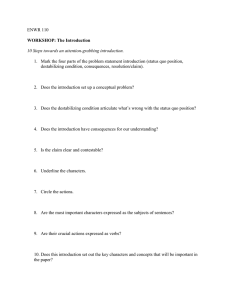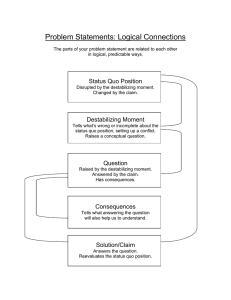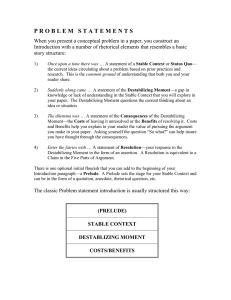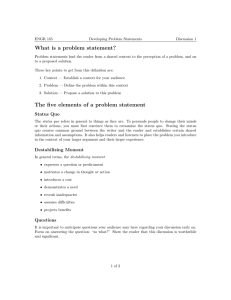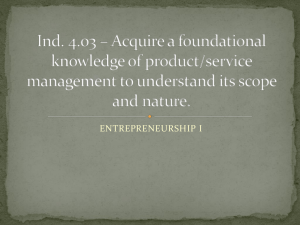Developing Good Problem Statements
advertisement
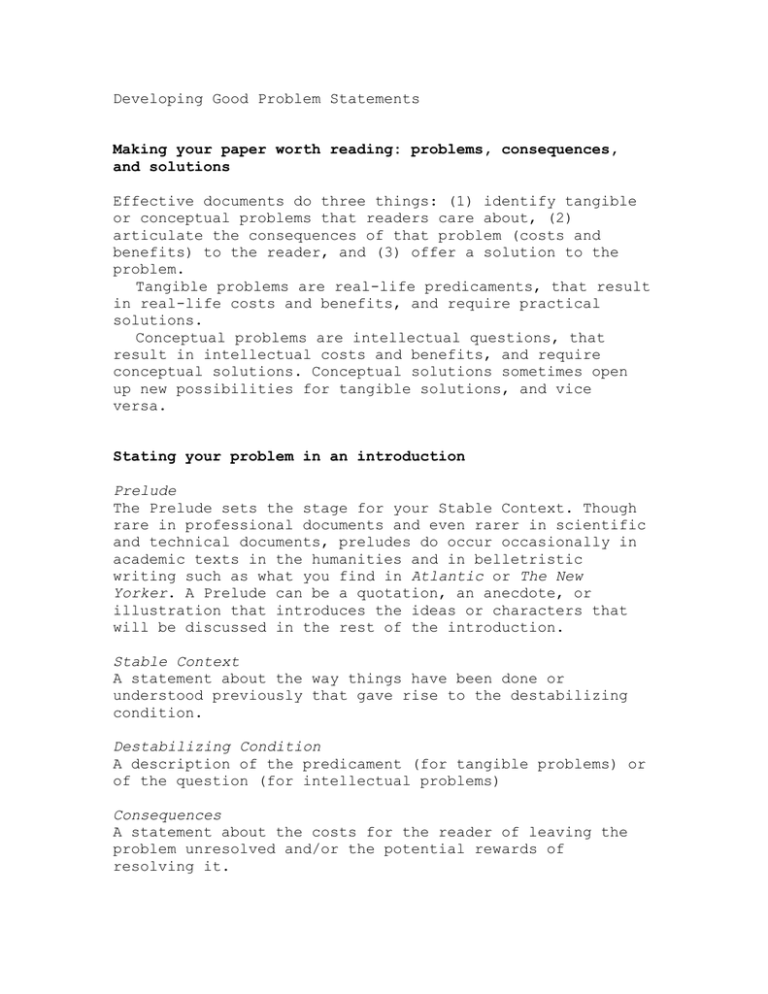
Developing Good Problem Statements Making your paper worth reading: problems, consequences, and solutions Effective documents do three things: (1) identify tangible or conceptual problems that readers care about, (2) articulate the consequences of that problem (costs and benefits) to the reader, and (3) offer a solution to the problem. Tangible problems are real-life predicaments, that result in real-life costs and benefits, and require practical solutions. Conceptual problems are intellectual questions, that result in intellectual costs and benefits, and require conceptual solutions. Conceptual solutions sometimes open up new possibilities for tangible solutions, and vice versa. Stating your problem in an introduction Prelude The Prelude sets the stage for your Stable Context. Though rare in professional documents and even rarer in scientific and technical documents, preludes do occur occasionally in academic texts in the humanities and in belletristic writing such as what you find in Atlantic or The New Yorker. A Prelude can be a quotation, an anecdote, or illustration that introduces the ideas or characters that will be discussed in the rest of the introduction. Stable Context A statement about the way things have been done or understood previously that gave rise to the destabilizing condition. Destabilizing Condition A description of the predicament (for tangible problems) or of the question (for intellectual problems) Consequences A statement about the costs for the reader of leaving the problem unresolved and/or the potential rewards of resolving it. Solution Usually in the last sentence of the introduction (the “hot spot” of the paper), tell your reader the gist of the solution or answer to the problem: this is the main claim that you will defend in the rest of the paper. Sometimes it’s wise to give just the promise of a solution or answer to come in this last sentence of the introduction. Some qualities of effective introductions: 1. The status quo is described fairly and accurately. 2. The destabilzing condition raises questions in the readers mind about the truth of the status quo. 3. The solution expressed at the end of the intro is in tension with the status quo. 4. The solution leaves your reader asking “Why do you think this is true?”
